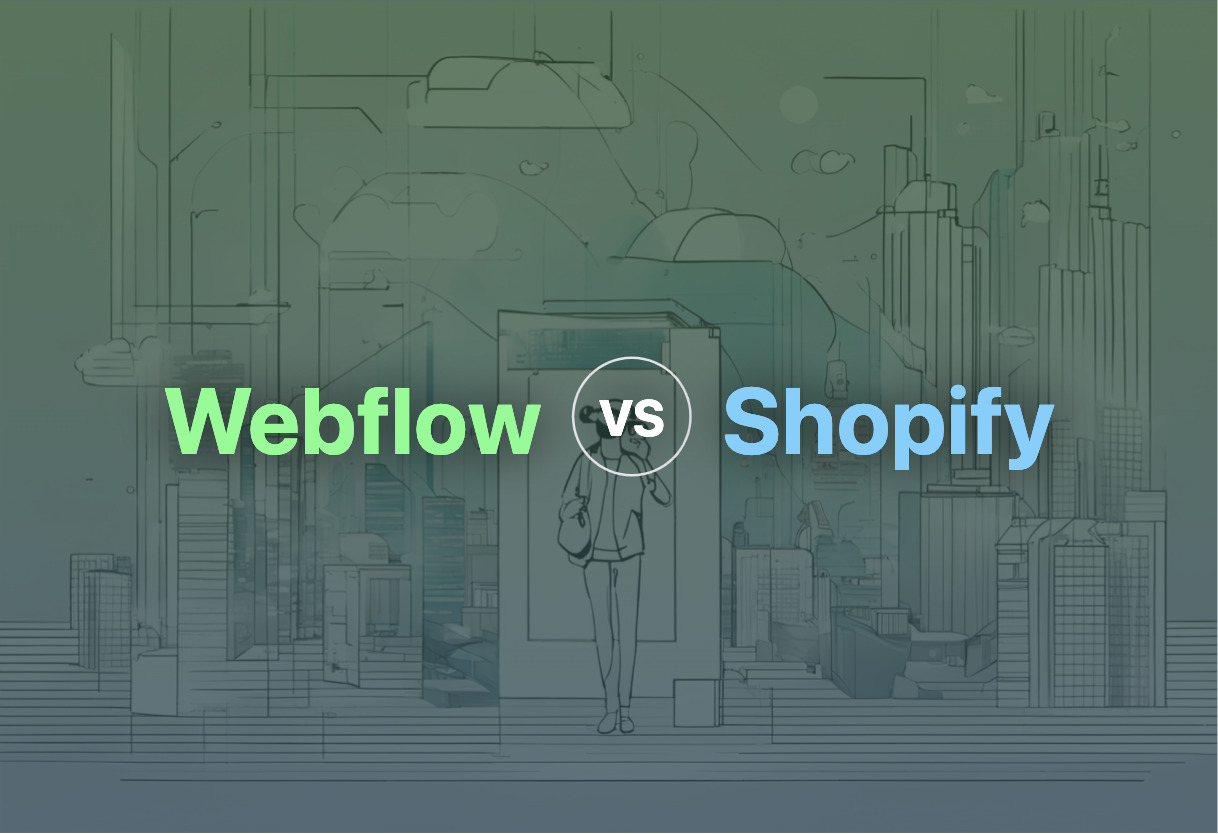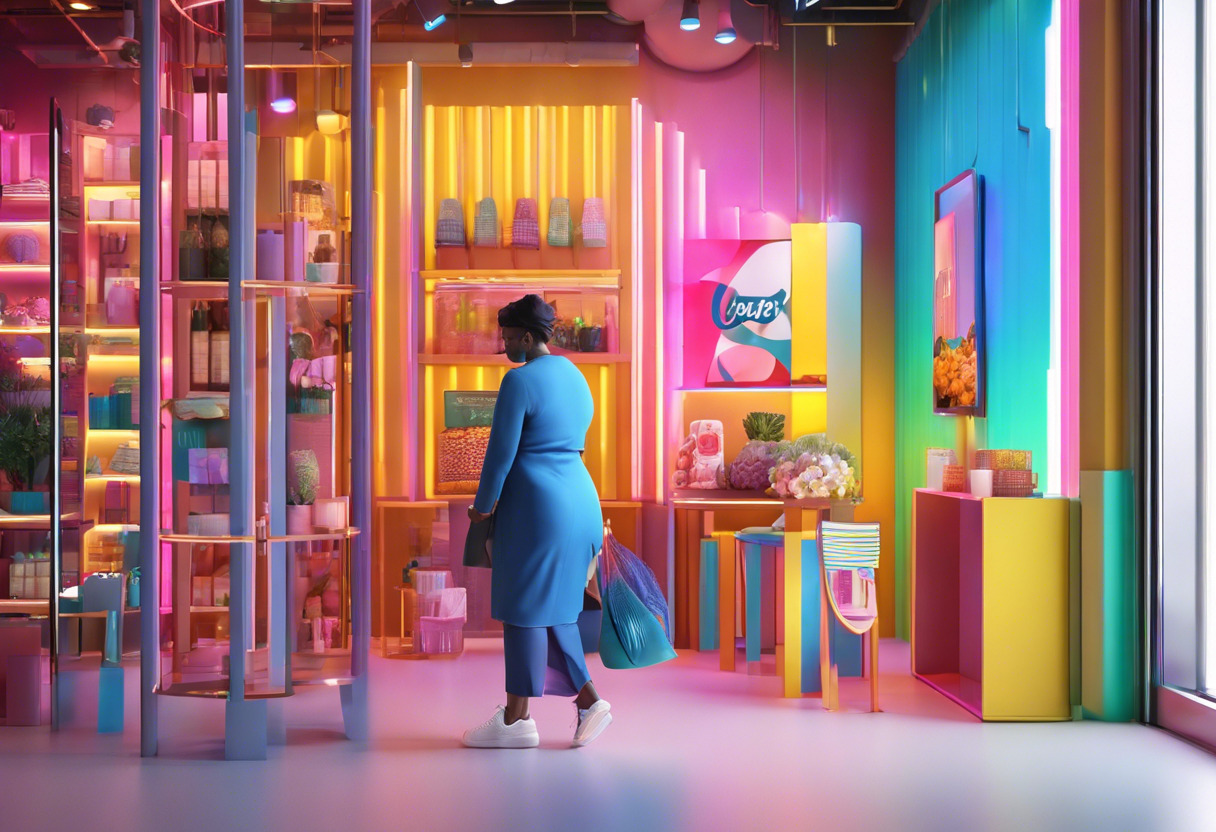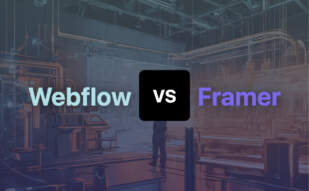For design-led customization and seamless native integrations, Webflow reigns supreme, best serving web designers and content creators. Conversely, Shopify offers vast template variety ideal for novice store owners, albeit with additional costs for unique designs.

Key Differences Between Webflow and Shopify
- Coding: Webflow empowers non-coders with thorough customization, while Shopify requires coding for bespoke designs.
- Design: Webflow offers end-to-end design control, whereas Shopify leverages pre-made templates and third-party design services.
- Price: Webflow’s pricing starts at $29/mo, while Shopify’s custom design services can push costs above $100,000.
- Support: Webflow University offers extensive tutorials, whereas Shopify relies on external agencies for design and development support.
- SEO: Both platforms offer solid SEO capabilities, with Webflow additionally providing blog features for improved rankings.
| Comparisons | Webflow | Shopify |
|---|---|---|
| Platform use case | Website creation without coding | Ecommerce and website creation |
| Custom solution | Enhanced design capabilities | Buy third-party templates or hire designers |
| Payment processing | Stripe, PayPal, Apple Pay, Google Pay | Native |
| Integration capabilities | Native interfaces, Zapier apps | Custom ERP or CRM systems |
| Web Design Costs | Starts at $29/mo when billed annually | Between $500-$20,000+ |
| SEO | Meta title, description generation, blog features | Crucial role, 43% sales from search |
| Discount tools | Built-in | Native tools |
| Order management | Order status, details, refunds. Sync with Google inventory | Managed by Shopify |
| Email integration | MailChimp | Native |
What Is Webflow eCommerce and Who’s It For?
Webflow eCommerce is a web creation platform that liberates users from the constraints of coding. It allows for robust customization of customer experiences, making it a suitable platform for marketing various products – physical, digital goods, and services. The platform puts heavy emphasis on design-focused brand representation. If you’re a professional designer like Maximilian Müsgens or content creator like Charli Marie, Webflow eCommerce will streamline your digital product creation process.

Pros of Webflow eCommerce
- Professional-grade design capabilities
- Comprehensive integration options with native interfaces and numerous Zapier apps
- Built-in Google Analytics for data-driven insights
- Secure hosting on SSL domain
- Intuitive and client-friendly dashboard for order management
Cons of Webflow eCommerce
- Pricing may not be ideal for individuals or small businesses
- Lack of offline sale possibility through POS integration
- Transactional fees through Stripe
What Is Shopify and Who’s It For?
Shopify is a retail platform offering customizable eCommerce websites through various inbuilt templates. The service is primarily for online merchants who need customizable themes for their online store. However, Shopify’s templates may not cater to unique brand needs, often pushing users to seek custom design services. If you’re an online merchant keen on a unique, engaging online store, Shopify can meet your needs after some customization.

Pros of Shopify
- Affordable pre-made templates
- Allows for unique, brand-tailored aesthetics through custom designs
- Presence of features key for user engagement
- Possibility of rapid-launch solutions
Cons of Shopify
- Absence of custom design services by Shopify itself
- Cost of full Shopify store design can be high
- Monthly subscription cost in addition to template and customization costs
Webflow vs Shopify: Pricing
While both Webflow and Shopify start their pricing at $29/mo, Shopify’s custom design costs can significantly inflate expenses.
Webflow
Webflow’s no-coding-needed eCommerce platform has a starting price of $29/mo when billed annually. Beyond this base price, users might encounter transactional fees through Stripe. However, the lack of add-ons in the form of plugins could present potential cost savings. Free video tutorial classes are available through Webflow University which may further reduce expenditure into external learning resources.
Shopify
Shopify’s pricing model includes the monthly subscription ($29.99-$299.99), added to which are cost of themes/templates and costs for any additional functionality development. Custom website design services come with their own costs too, ranging from $500 to $1,000 for basic graphics or template creation, and could escalate to over $100,000 for extensive projects.
The Final Faceoff: Webflow vs Shopify
After a head-to-head march pitting Webflow and Shopify against one another, we’ve arrived at the judgment hour. It’s verdict time, folks.
Web Designers and Developers
Webflow is your platform if you cherish full control over your design without touching a line of code. With customizable templates and a thriving CMS, creating top-tier websites is a breeze. The platform is a happy hunting ground for prototyping, SEO control, and integrating with native interfaces or Zapier apps. An array of payment processing options and the order management dashboard collectively make for a seamless experience.

eCommerce Merchants
Shopify boasts a vast array of premade templates, offering a quick, affordable entry into the eCommerce scene. It thrives on delivering a functional and engaging user experience with eye-catching features like carousel slides, mega menus, newsletter sign-ups, and much more. Shopify’s SEO functionalities drive nearly 43% of eCommerce sales, making it an alluring choice for merchants.

Brand Buffs
Customizable end-to-end customer experiences and brand representation find a home in Webflow. Shopify doesn’t hold back here with the option to craft unique, brand-tailored aesthetics employing custom functionality and ERP or CRM integrations. Both platforms will cater to the singular essence of your brand – it just depends on how deep you’re willing to go.

In the final analysis, it seems we have a draw. Shopify serves up out-of-the-box solutions that get your brand online in a jiffy. Webflow, however, garners favor with its unbeatable customization sans any coding. Thus, your choice hinges on whether you prioritize rapid deployment or tailor-made design.
Tiffany Brise
Content writer @ Aircada, patiently awaiting a consumer AR headset that doesn’t suck.





